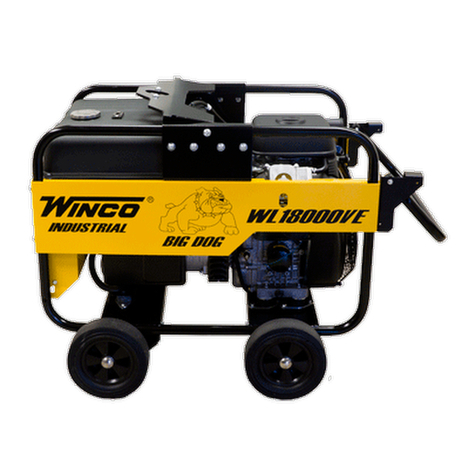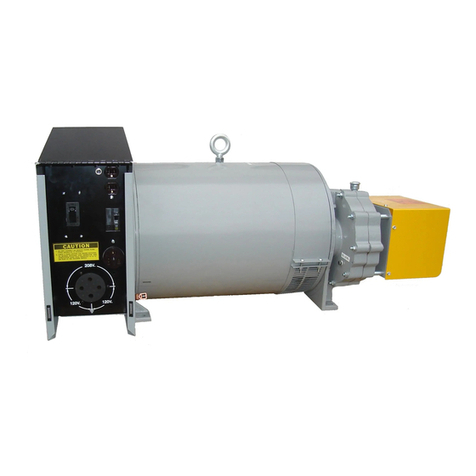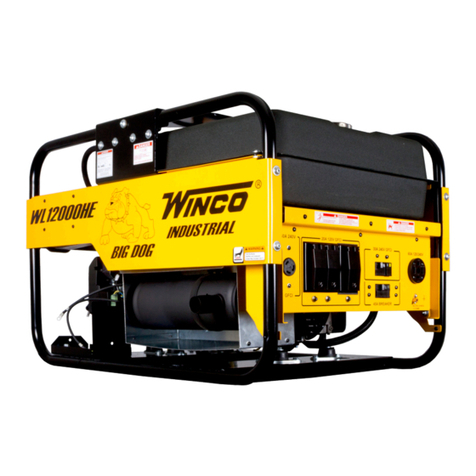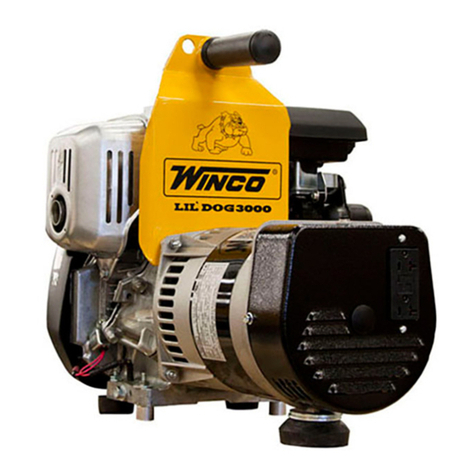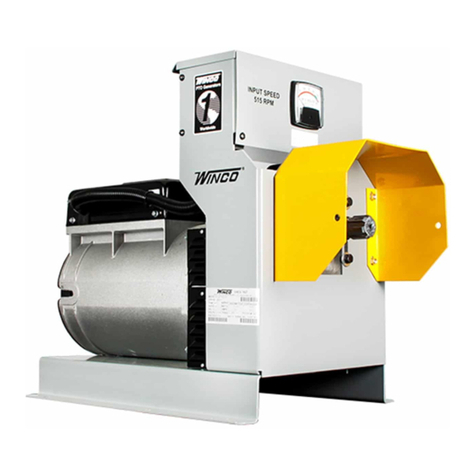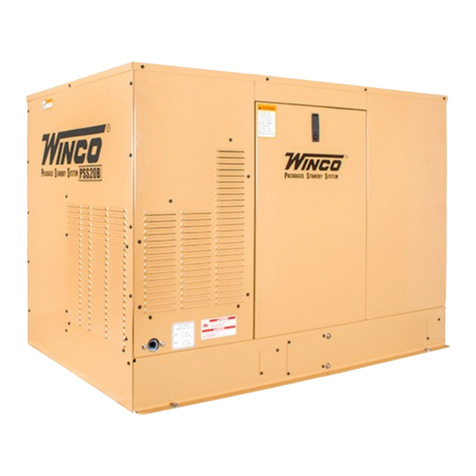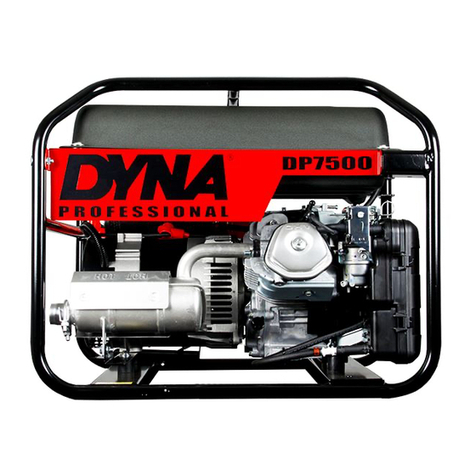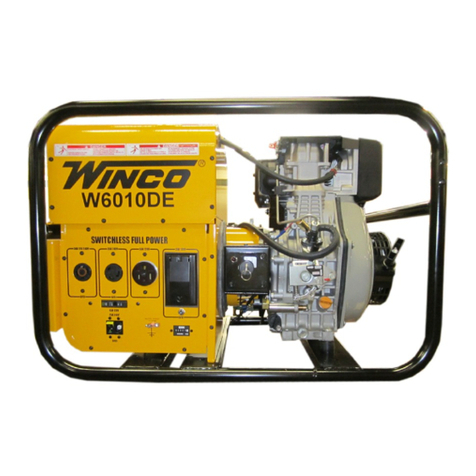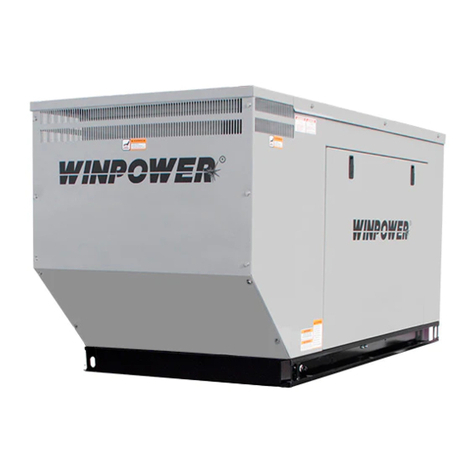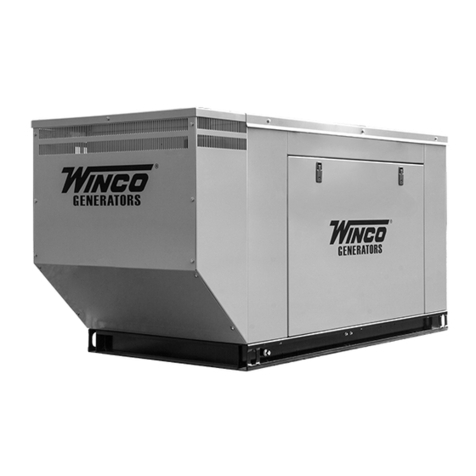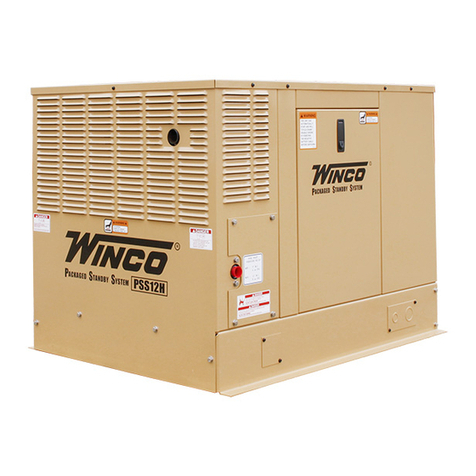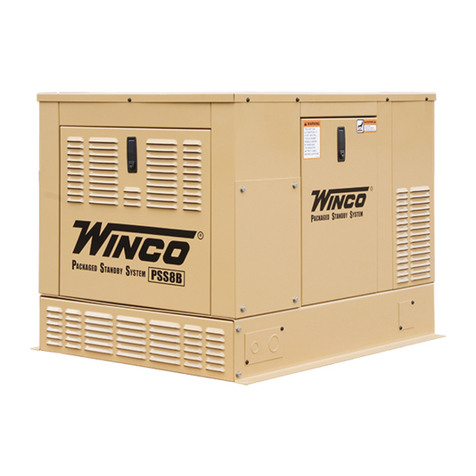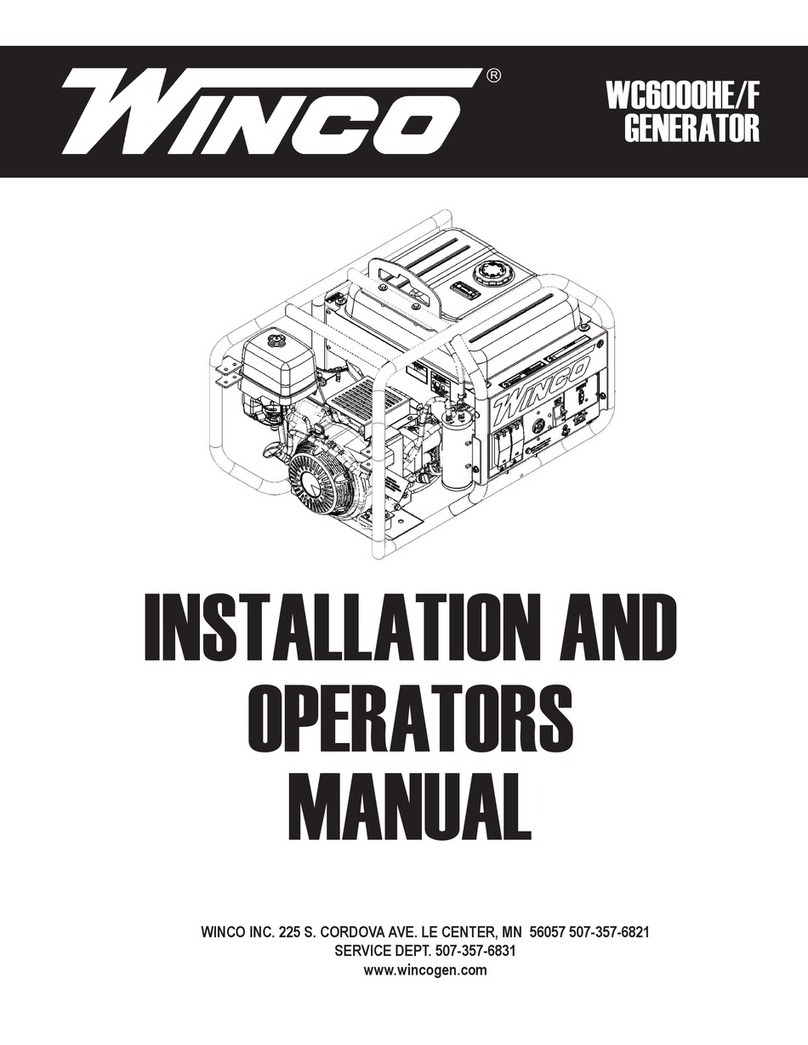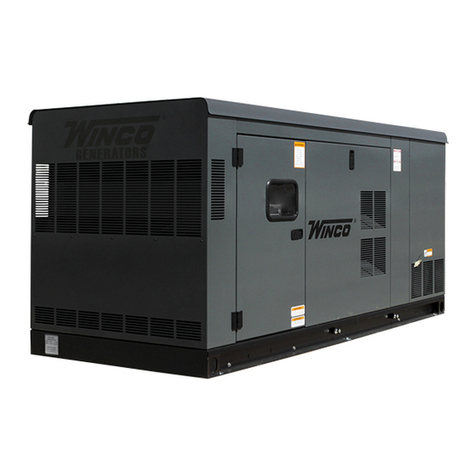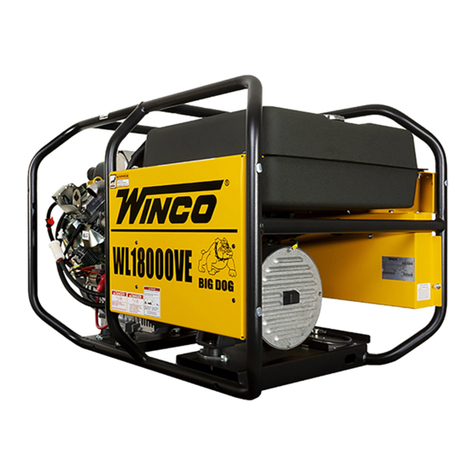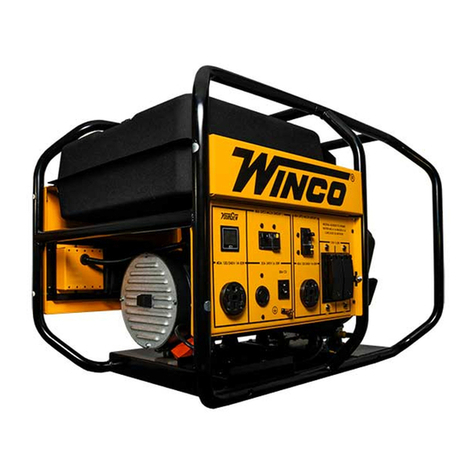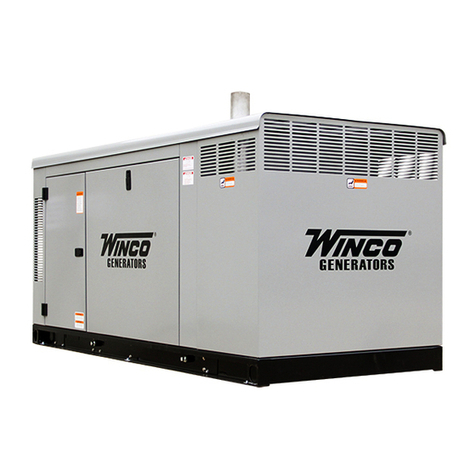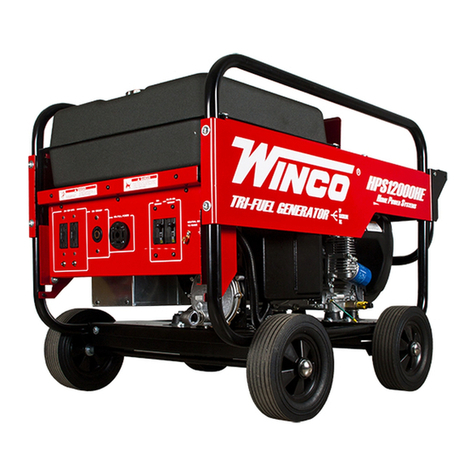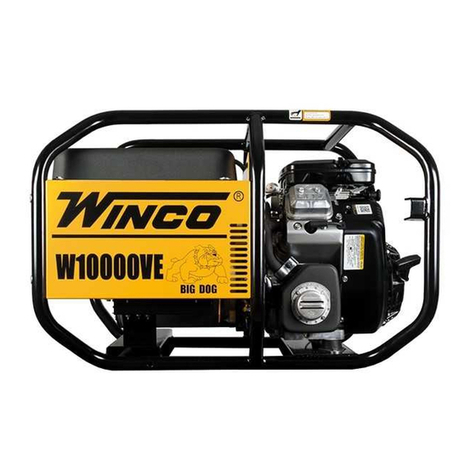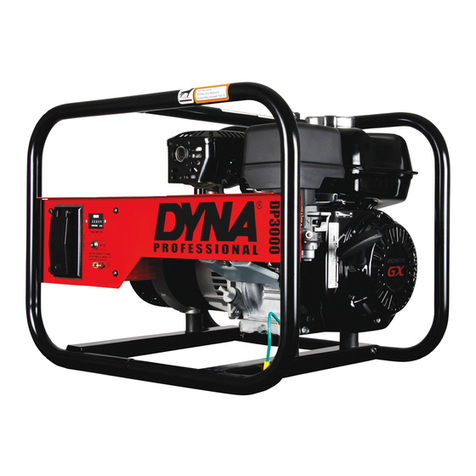INSTALLATION
These units require approximatelytwo (2) horsepower
for every 1000watts of generatoroutput. Theoretically
you should be able to produce 1000watts with
1.4
Horsepower, but this is only possiblewith 100%
efficiencies in boththe engine and the generator.
Betweenengine and generator efficiencies of only
80%
to 90% and the lossesthrough the drive systemthe two
horsepower requirement is more realistic.
For example, this 1,500 watt generator output will
require a 3 or 4 h.p. Enginefor full output, good speed
I
voltage regulation, and satisfactory load performance.
2. When determining the prime mover
I
generator pulley
ratioto drivethe generator at the correct operating
speed, bear in mind that the power ratingof most prime
movers (usually an engine) varies with the speed-that
is, it produces more power at higher speeds, less when
slowed. The prime mover must be run fast enoughto
reachthe desired horsepower for good generator set
operation.
The drive belt system must beof adequate size and
must be tight enough to powerthe generator without
slippage. Becarefulnotto overtightento the extentthat
it puts excessive strain on the bearings--doing so can
cause bearingfailure and other possibledamage to the
generator.
Alignment ofthe generator to the prime mover is
important. Misalignment of the pullieswill cause
excessive belt and pulleywear and unnecessary stress
on the prime mover.
3.
The following table shows the effect of various operating
speeds and electrical loads on a typical generator when
matched and mounted to an adequate prime mover
togetherwith the natural "voltage drop" withinthe
generator itselfdue to loadcurrent and heatingof the
windings, results in a slightly lower voltage than when
--
the generator is running idle.
The normal, slight variations in speed also directly affect
thefrequencyof the output current. Thisfrequency
variation has no appreciable effect in the operation of
most loads (such as motors, lights and most small
appliances). However, timing devices and clocks will
not keep perfect time unless the engine can keepthe
generator running at exactly 3600 rpm at all times.
Since this is not usually possible, minor time errors in
clocks occur.
The speed of the engine is usually adjusted so that the
generator produces proper voltage. Ifthe adjustment is
made "cold", set the voltage a little higher than normal
since itwill drop a few volts as the generator warms up.
**"
CAUTION
****
When operating continuously at full load the generator
shell becomesvery warm. Itwill be uncomfortableto
the touch-this is normalfor any high performance
inherently regulated generator.
Outputvoltageshouldbecheckedperiodicallyto
insureproperoperationofthegeneratingplantand
appliances.
****
CAUTION
"**
-
Low voltage may damage any motors or appliances
connectedto it. Runningthe generator at excessively
high speeds results in too high voltage which will also
damage electrical devices connectedto it. Excessively
high speed may also cause damage to the generator
stator windings.
Although individualunits and models may vary slightly,
the normalvoltage andfrequencyoftypical60 cycle
generators described in this book are approximatelyas
follows when powered by a typical prime mover (engine)
runfirst with no load applied, then at halfthe generator
capacity and finally when loadedto itsfull capacity as
rated on the nameplate:
GENERATOR
LOAD SPEED FREQUENCY VOLTAGE
NONE 3690RPM 61112 HZ 129VOLTS
HALF 3600RPM 60HZ 120VOLTS
FULL 3510RPM
58
112
HZ
115VOLTS
****
CAUTION
****
Required generator speed must be maintained at 3600
+I-
90 rpm under all load conditions.
4.All engines havea tendency to slow down when a load
is applied. The governor on the engine is designedto
holdthe enginespeed nearly constant. When the
electrical load connected to the generator is increased,
the engine is more heavily loaded and as a result the
speed drops slightly. This slight decrease in speed
PLAN THE INSTALLATION
Plans for installation should be prepared with proper
attention to mechanical and electrical engineering detail
to assure a satisfactory system installation. The
informationin this manual is offered as a guide to
finalizing your installation plans. The installation
sequence is summarized below:
Generally these two bearing generators are used on
portable equipment. For best service consider the
following
:
1.All electrical equipment should be protected from
excessive moisture. Failure to do so will result in
deteriorationof the insulation and will result in short
circuits and grounds.
2.
The generator should be installed in
a
sheltered area. If
the unit must be left in the open, it should always be
protectedwith a weather cover such as a tarp or large
-
piece of canvas after each useto keep out water and
dust.
TB
SERIES
P
'age
4
60706-098

